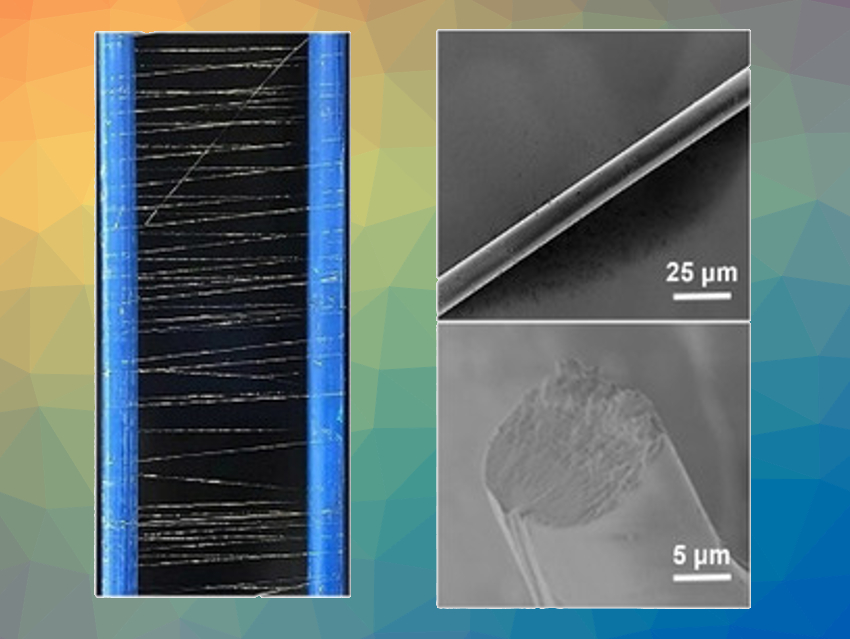Silk fibers from spiders or silkworms are light-weight and mechanically strong. Researchers have worked on making similar protein-based fibers, e.g., for biomedical applications. Genetically modified spider-silk proteins, for example, have been well-studied. However, the resulting fibers generally have worse mechanical properties than natural spider silks.
Kai Liu, Changchun Institute of Applied Chemistry, Chinese Academy of Sciences, Tsinghua University, Beijing, China, and University of Science and Technology of China, Hefei, and colleagues have developed a different type of bioinspired fiber based on recombinant chimeric proteins containing the sequences of a cationic elastin‐like polypeptide (ELP) and squid ring teeth (SRT) proteins. SRT proteins are found in the suction cups of squid tentacles. The genetically engineered protein was expressed in Escherichia coli bacteria. The fibers were then prepared by wet spinning a solution of the protein together with a solution of glutaraldehyde (GA) for crosslinking (pictured below). The finished fibers (pictured above) were stretched and collected by a rotation collector.
The chimeric protein fibers have high mechanical strength, better than many recombinant spider silks and even comparable to some natural counterparts. Overall, this work provides a concept for exploring bioinspired ultrastrong protein materials through the development of new types of structural chimeric proteins.

- Bioinspired and Mechanically Strong Fibers Based on Engineered Non‐Spider Chimeric Proteins,
Yuanxin Li, Jingjing Li, Jing Sun, Haonan He, Bo Li, Chao Ma, Kai Liu, Hongjie Zhang,
Angew. Chem. Int. Ed. 2020.
https://doi.org/10.1002/anie.202002399




